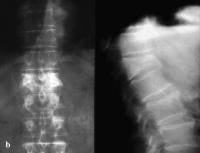By: Stephanie Burke

With the upcoming holidays, many people are starting to worry about how to manage the pain associated with a long flight.
Collected from many posts on our Forums, here are the top 5 most frequently mentioned tips about how to survive an airplane ride with less pain or discomfort.
- Move
Sitting in the same position for a prolonged period puts a great deal of stress on your spine, so get up and walk and stretch as frequently as possible. Go to the back of the plane and do some gentle stretches - toe raises. Consider bringing a doctor's note and alert the flight crew prior to boarding that you have a back condition and will need to - Schedule Smart
Try to book a flight for a time of day when the plane is likely to be less full. With no one sitting next to you it will be easier to move and stretch while remaining in a sitting position, and to change sitting positions as needed. It will also be easier to retrieve your belongings from under the seat in front of you without twisting and straining your lower back. - Support your Spine
Bring a back roll or ask for extra pillows to put behind your back to keep your spine straight and prevent slouching. This will alleviate pain and pressure. If you are on the shorter side, bring something to prop up your feet to keep your knees at a right angle. - Learn more about travel pillows in Different Types of Pillows
- Bring the Heat and Chill
Bring gel packs that can be frozen or heated (or bring one of each). These are great for treating swelling, sore muscles, back pain, and even headaches. Be sure to have the physician's note about your back condition handy in case airport security has issues with the gel pack in your carry-on luggage. Bring a couple of empty Ziploc® baggies as well - these will not be an issue to get through security can be filled with ice once you're at the gate and/or on board the plane. - Pain Medication can Help
OTC pain killers like acetaminophen and NSAIDs, or prescription drugs like narcotics or muscle relaxants, can help "take the edge" off during and after the flight. Remember, these medications need to build up in your bloodstream, so it is best to take them at least an hour before you anticipate the pain setting in. Again, a letter from your doctor stating your need for any prescribed pain medications will help with possible airport security issues; and always be sure to keep medications in their original bottles. - Read more about Back Pain Medication.
Using a combination of the tips above should make travel as easy on your back as possible. And remember to try to reduce stress however possible - bring soothing music, a good book, chocolate, do some deep breathing - anything that eases your mind and calm your body will help.




 Finalmente, las técnicas asistidas por endoscopia permiten actuar sobre el canal medular con un acceso mínimo al mismo, el cual evita daños a las estructuras sanas circundantes. La óptica
Finalmente, las técnicas asistidas por endoscopia permiten actuar sobre el canal medular con un acceso mínimo al mismo, el cual evita daños a las estructuras sanas circundantes. La óptica 



